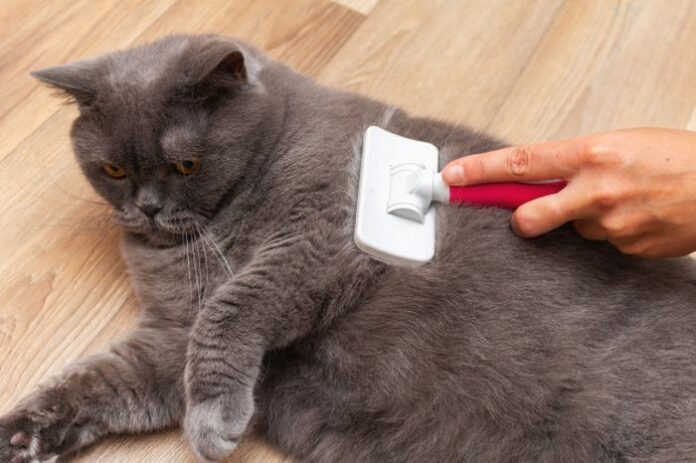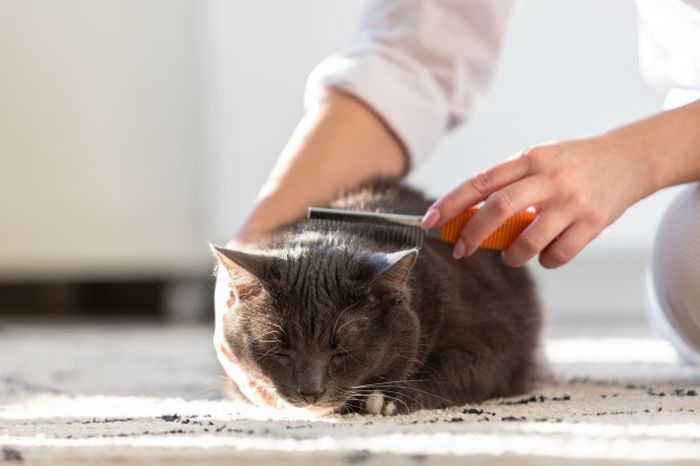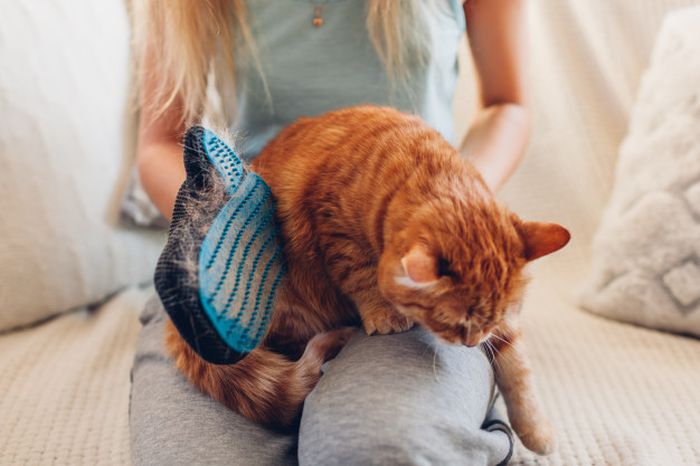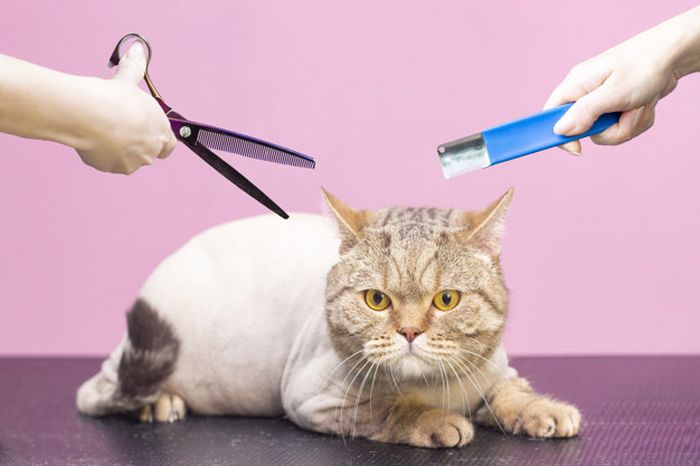
Grooming your cat can be a stressful experience for you both. Contrary to the widespread opinion, cats do need regular check-ups and grooming. Generally, cats take good care of themselves due to the built-in grooming tools, teeth, and mouth, but they still require some extra attention from you.
Routine inspections of the skin and fur of your pet can immensely affect their health and ensure a long and happy life. Follow these seven easy tips on how to make grooming time as enjoyable as possible.
1. Check for health problems
Every time your cat jumps on your lap you can use that opportunity to give her a quick check-up. Even though this can never replace regular visits to the vet, but it might help with catching some health issues early on.

2. Eyes, ears, and nose
Cat’s eyes should be clear and free of any swelling and discharge as this can be a sign of an infection. Sometimes even the smallest redness can be the start of something more serious. If you notice that your cat is scratching her ears often, he or she might have ear mites.
Check if any brownish oozing and unpleasant smell are coming out of the cat’s ears. A bit of ear wax is normal, but otherwise, ears should be clear of any dirt, scaling, redness, or lesions. Healthy cats have pinkish smooth noses with a little moisture. Touch it to see if there are any lumps or open sores.
3. Skin, fur, and claws
A lot of health problems can be spotted by observing your cat’s skin and coat. The skin should be pink without any open wounds and irritation. Many cat breeds are prone to skin parasites, so pay special attention to any scratches your cat might have. Claws should be trimmed once a week; you can do it by yourself or if you’re unsure about how to do it painlessly visit a groomer. For more tips on how to clip cat’s claws visit this site.

4. Body pain and breathing
While petting your cat, pay attention if she has any lumps or bumps hiding under her coat. If some spots are tender to the touch, you should go to your vet for a detailed check-up. Also, watch her when she moves for any signs of stiffness or limping. As far as breathing, it should be smooth and effortless. On the first signs of any wheezing, or shortness of breath, visit the vet.
5. Brushing
Cats take care of their coat by licking it several times a day. Still, you should help her out a little by regularly brushing her fur about once a week. This will also help you spot any health issues like parasites, lumps, and inflammation. With brushing, you can help reduce the number of hairballs, too.
You can start brushing your can from an early age. If you start when she is a kitten, she will get used to it quickly, and might even start to enjoy it in time. Older cats need help with reaching some places since they tend to have arthritis problems. Longhaired cats need more attention, and daily brushing is highly recommended to prevent it from tangling.

The key to an enjoyable session of grooming is to take it slowly. If your cat is more comfortable with several short sessions, don’t force her to sit still in one take. Start with using soft bristles brush at the beginning as cats often have an easier time accepting them. Harder brushes you can introduce slowly, in time, when your cat is used to brushing.
While stroking your cat’s fur, make sure that there are no other distractions present as they can get interested in play rather than grooming. Cats are curious by nature, so if she wants to play with a brush for a couple of minutes, let her. And, of course, once you are done don’t forget to give her treats for being such a trooper.
6. Bathing
Cats naturally hate to take a bath but sometimes when they rolled in something dirty or smelly, there are no two ways about it. It can be a very stressful experience for both of you. Fussing about the water is a normal reaction, and you should approach it with a lot of patience.
Use a shampoo that is made specially for felines, not for humans or dogs since it can dry out their skin and cause flaking. If possible, use shampoos, and conditioners if needed, with natural ingredients. Use warm water, not too hot. Put the small amount of shampoo in your palm and try to spread it evenly not missing any dirty or sticky spots.

Add a little water and gently scrub to reach their skin. Never wash your cat’s face with shampoo or dunk it into the water. This will end your bathing in a moment. Only use a wet towel to wipe the cat’s face and ears clean.
Rinsing thoroughly is super important since your cat will be licking her coat all the time. Leaving residue can be toxic for your pet, so rinse their fur well, going several times over the whole body. When you’re done, let her shake off excess water and towel dry her coat. If a hairdryer doesn’t scare her, you can use this to speed up the process.
7. Claws’ trimming
If you want to play with your cat you have to trim her claws first. This can save you a lot of furniture too since they love to climb everywhere. It’s also important for them health-wise, with getting rid of any sharp edges that could hurt them or having a broken claw. It would be great if your cat is used to the clipper from an early age, but if not, introduce the tool slowly.

For starters just touch her claws with a clipper to see how she reacts. Once the cat is comfortable in your lap trim only the sharp part of their claw. You may be going to have to do this in several sittings, maybe even over several days. Don’t try to force her and cut her nails, you could accidentally hurt her paws.
In any case, grooming your cat to be a tedious and long process that asks for a lot of patience. If your cat is not in the mood today, that’s fine, do it tomorrow. The point is to make this chore fun for both of you. That way, grooming is going to be a pleasant experience for your beloved feline.
















